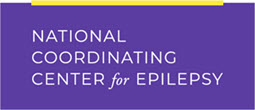Mission
The mission of the National Coordinating Center for Epilepsy is to support those working to improve access to coordinated, comprehensive, quality care for children and youth with epilepsy (CYE), particularly in medically underserved and/or rural areas across the life-course.
Goals
The goals of the National Coordinating Center for Epilepsy are to:
- Provide national leadership by building partnerships, sharing resources on best practices, and developing policies to improve access to coordinated and comprehensive care for CYE.
- Provide infrastructure and technical assistance to the Transforming Health Care for CYE program grantees.
To accomplish these goals, the AAP leverages its expertise, infrastructure and partnerships with stakeholders to create a sustainable system of coordinated care for all CYE through individual, physician, and national strategies, and monitors successes through comprehensive evaluation plans. Components of the medical home – accessibility, family-centered, continuous, comprehensive, coordinated, compassionate and culturally effective care – are integrated into activities to ensure that the needs of all CYE are met across their life-course.
Objectives
National Center Objectives:
- Increase the number of partnership activities with organizations that represent and/or serve CYE and their families in diverse and medically underserved communities.
- Increase the dissemination of national resources to support CYE and their families in rural and/or medically underserved areas.
- Publish a report that identifies and describes national priorities related to CYE and their families in rural and/or medically underserved areas.
Transforming Care for CYE Grantee Objectives:
- Increase access to care for CYE in the target population through telehealth strategies that provide direct care, including teleconsultation, tele-education, telemedicine and mobile health.
- Families of patients in the target population served by Transforming Health Care for CYE grantees report that they are partners in shared decision-making in their child’s care.
- Increase the number of completed health care transition readiness assessments of youth (ages 14–22) with epilepsy in the target population.
- Increase the number of participating primary care providers who report increased communication, collaboration and co-management with specialty providers.
Last Updated
11/18/2021
Source
American Academy of Pediatrics
